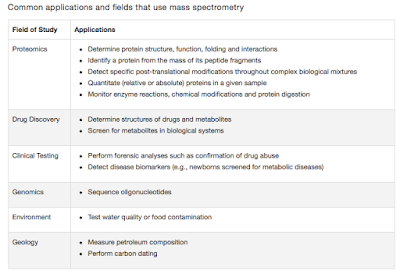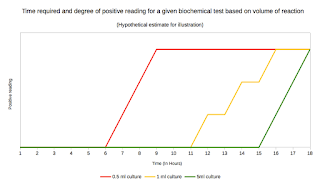Staph Vs Staph
Welcome back,
In my last blog post, I commented my views on Adenovirus 36 and its association with obesity. I also argued, regarding the importance of microbial interactions with our own, and how it can manipulate our biology system. There are many more such examples, another famous being association between Coxackie B4 and Diabetes mellitus Type 1. One point that i missed to make is the microbial influence on brain chemistry. A study by Bravo and group, in PNAS were able to demonstrate a significant link between the gut microbiota and neurochemistry. The chief finding reads "L. rhamnosus (JB-1) reduced stress-induced corticosterone and anxiety- and depression-related behavior".
With that note of follow up, let me move on to another topic on staphylococcus aureus. In a TWiM issue, there was an incredible discussion on Staphylococcus aureus. In the podcast, i was introduced to a bacterial interference of interest. They made a point. Staphylococcus epidermidids, produces a factor called Esp that can inhibit Staphylococcus aureus. I never knew that there exists such an interesting fact. So i decided to give a bit more detailed look into this.
For a few basic information on Staphylococcus you can view my previous post here. Staphylococcus aureus represents a major health problem in Medicine. And carrying them around is bad. Worst, people don't know are they carrying it themselves. The dwelling site for the pathogen, can be at multiple sites, such as Skin or Nasal flora. And they may be a long term carrier or, intermittent one. Nearly 40% of healthy people can carry this organism on their skin without any signs of infection. This is referred as colonization.
 |
Fig 1: Mec gene complex
(Source)
|
MRSA or Methicillin resistant staphylococcus aureus, represents a great problem. They are often difficult to treat infections, and dealt with higher level of antibiotics such as Vancomycin. And the next strain version VRSA (Vancomycin resistant staphylococcus aureus), represents another major leap in this problem. The Fig 1, illustrates the Mec gene complex responsible for the Methicillin resistance.
Carriers of MRSA are the potential problems. MRSA recovery from nasal sites has been reported widely and in increasing frequency. The best available protocols suggest that all the health care workers (Hospital staff), be screened for the presence of Staph. The positive carriers should be then put on an antibiotic regimen usually involving bacitracin or rifampicin. Please note they have side effects. Mupirocin calcium (Topical application) is considered by many clinicians for treating nasal carriers.
 |
| Photo 1: Staphylococcus aureus biofilms (Source) |
Before i go further, i want to make a note on biofilms. Biofilm are structures formed when bacteria/ microbe adhere to surfaces in aqueous environments, excrete a slimy, glue-like substance that can anchor them to surfaces. Biofilms maybe formed on tissue surfaces also. Its a bit like encasement, which protects them from resistance forces and also antibiotics. The biofilm maybe formed by one particular species or more often maybe poly-microbial in nature. The Photo 1 to the right shows a Staph biofilm, imaged with Confocal laser microscopy.
So here's the deal. Staphylococcus aureus and Staphylococcus epidermidis don't like each other. The S. epidermidis, being a normal commensal of human flora demands its place. When encountered by the rival, a product called as Esp intervenes with the biofilm of S. aureus causing disruption. The idea is let the microbe brothers (or sisters, whatever) keep fighting and we make use of the strategy. There is a huge amount of epidemiological and experimental data suggesting only S aureus or S. epidermidis resides at one point of time. Purified Esp inhibits biofilm formation and destroys pre-existing S. aureus biofilms (Reference).
Esp stands for "epidermidis serine protease". First discovered by Moon etal was described as an endopeptidase. It had the properties of being a degrade fibrinogen, complement protein C5, and several other proteins. This proteinase was shown to possess a strong preference for cleavage after glutamic acid residues, but not after aspartic acid. It is not exactly known, how the Esp is able to interfere with the biofilm formation. Compounds such as Lysostaphin work by attacking both the individual sessile cells of the S. aureus biofilms and the extracellular matrix (Reference). In contrast, the Esp does not break biofilm by killing the bacteria that are in the biofilm, but more possibly releases the bacteria from the biofilm (Link).Moreover, Esp enhances the susceptibility of S. aureus in biofilms to immune system components.
A study in PLoS One, evaluated the potential of S epidermidis colonization in a mouse model and found it successfully could MRSA occupying the area. This study highlights a nasal probiotic use, which is potentially a good way to eliminate Staph Colonization. However, i have some unsolved questions. The first is, will the method be of potential use in eliminating a pre existing staphylococcus biofilm and completely eliminate them. Am not sure if this can happen and probably the bacterial load may be important. The second is we could establish a S epidermidis in nasal flora that represents a potential problem. So use of Esp as a pharmacological compound is better. And how long will it last?
Sugimoto S, Iwase T, Sato F, Tajima A, Shinji H, & Mizunoe Y (2011). Cloning, expression and purification of extracellular serine protease Esp, a biofilm-degrading enzyme, from Staphylococcus epidermidis. Journal of applied microbiology, 111 (6), 1406-15 PMID: 21974778.





Comments
Post a Comment